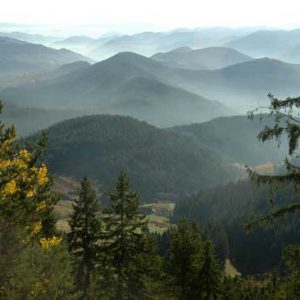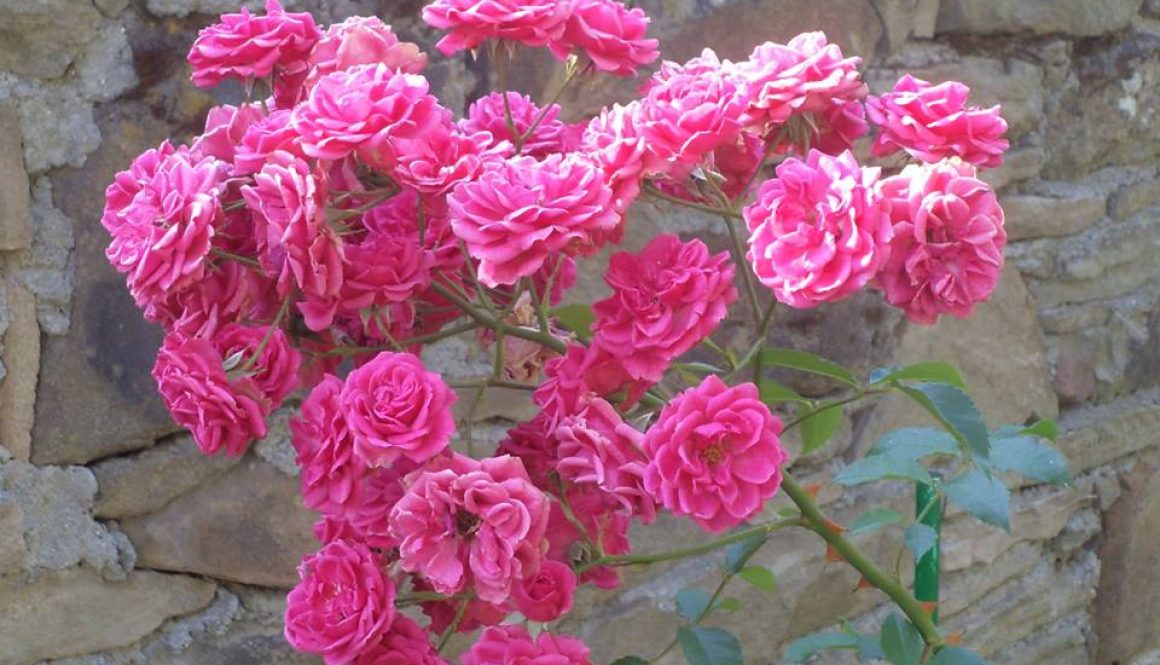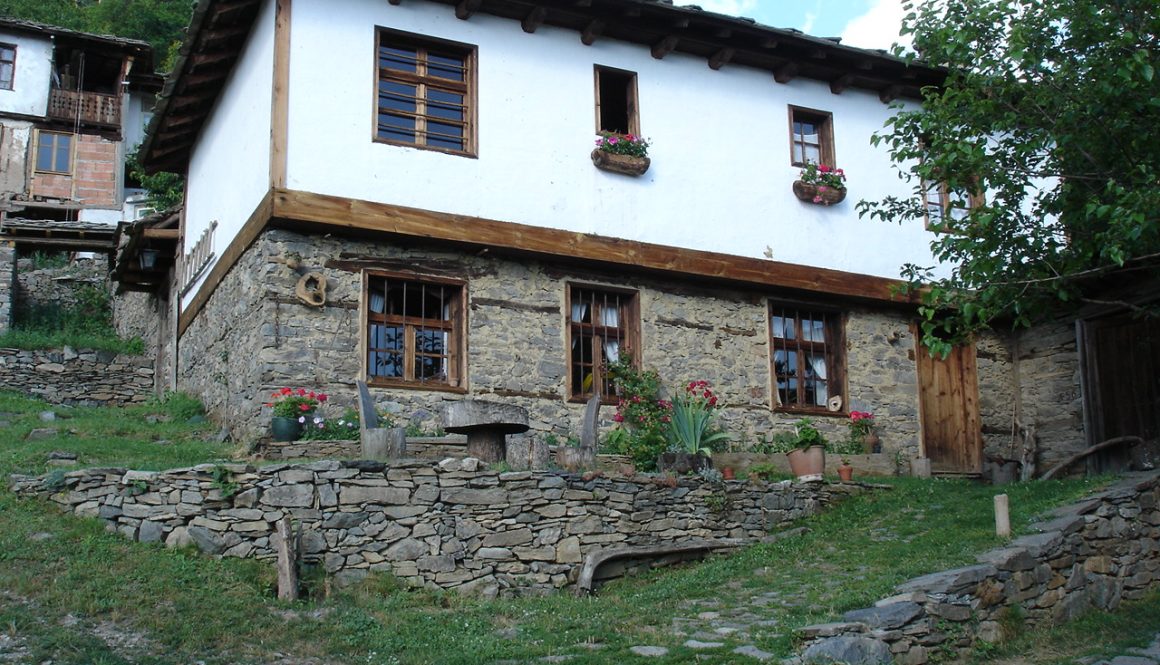State government: Parliamentary republic, one-chamber parliament – 240 members of parliament elected for a period of 4 years
President: Rosen Plevneliev
Prime Minister: Boiko Borisov
Monetary unit: Bulgarian lev /BGN/, BGN 2 = EUR 1
Time zone: GMT + 2
Country code: +359 (Bulgaria)
Measuring system: Metric
Airports: Five international airports; over 60 international airlines
Public holidays: 1 January, 3 March, 1 May, 6 May, Easter, 24 May, 6 September, 22 September, Christmas (3 days)
Population: 7,973,671
Language: Bulgarian
Religion: Eastern Orthodox
Geography:
 Bulgaria is situated in southeastern Europe. It has an area of 110,910 sq km which occupies the eastern part of the Balkan Peninsula and constitutes 2% of Europe’s territory.
Bulgaria is situated in southeastern Europe. It has an area of 110,910 sq km which occupies the eastern part of the Balkan Peninsula and constitutes 2% of Europe’s territory.
Bulgaria’s relief is varied with lowlands, plains and hilly lands prevailing. The lowlands /up to 200 m above sea level/ make up 30% of Bulgaria’s area, the plains and hilly lands /200-600 m/ 40%, the low mountains /600-1,000 m/ 16%, the medium-high mountains /1,000-1,600 m/ 10%, and the high mountains /over 1,500 m/ 4% respectively.
Bulgaria’s climate is defined by the mixture between the temperate and the subtropical (Mediterranean) climatic zones. The average annual temperature is 10,5°C. The coldest month is January and the warmest July. It is coldest in winter in the Danube Plain and in the high mountains and mountain valleys, and warmest along the Black Sea coast. In summer it is hot in the whole country except high in the mountains.
 Bulgaria’s flora and fauna is characterized by 94 types of mammals, 383 types of birds, 36 types of reptiles, 16 types of amphibians, 207 types of Black Sea and freshwater fish, around 27,000 types of insects and other invertebrates, between 3,500 and 3,750 types of higher plants and more than 6,500 types of lower plants and fungi. Bulgaria is one of the countries with the greatest bio-diversity in Europe. It is in the fifth place in Europe regarding the number of lower plant species and in the first regarding the variety of animal species. Flora and fauna variety in Bulgaria is 6-8 times bigger compared to the United Kingdom’s. Bulgarian forests need our special attention. They cover around 3,9 mln hectares (around 35% of the country’s total area). Around 60% of Bulgarian forests are naturally formed.
Bulgaria’s flora and fauna is characterized by 94 types of mammals, 383 types of birds, 36 types of reptiles, 16 types of amphibians, 207 types of Black Sea and freshwater fish, around 27,000 types of insects and other invertebrates, between 3,500 and 3,750 types of higher plants and more than 6,500 types of lower plants and fungi. Bulgaria is one of the countries with the greatest bio-diversity in Europe. It is in the fifth place in Europe regarding the number of lower plant species and in the first regarding the variety of animal species. Flora and fauna variety in Bulgaria is 6-8 times bigger compared to the United Kingdom’s. Bulgarian forests need our special attention. They cover around 3,9 mln hectares (around 35% of the country’s total area). Around 60% of Bulgarian forests are naturally formed.
Bulgaria has 3 national parks, 10 natural parks and 98 reservations.
The natural lakes are about 300. Their area is 95 sq km. According to their origin, they are divided into: seaside, riverside, glacial and karst lakes. The lake areas in Bulgaria have recently grown in number due to the building of a large number (around 2,000) of artificial lakes (dams).
 River waters are the main part of Bulgaria’s water resources (amounting to around 19 bln. cubic meters). The rivers rise mainly in the high mountains and flow into the Black Sea (via the Danube) and into the Aegean Sea. Bulgaria has 526 rivers longer than 2,3 km. The only navigable river is the Danube lying along the northern Bulgarian border.
River waters are the main part of Bulgaria’s water resources (amounting to around 19 bln. cubic meters). The rivers rise mainly in the high mountains and flow into the Black Sea (via the Danube) and into the Aegean Sea. Bulgaria has 526 rivers longer than 2,3 km. The only navigable river is the Danube lying along the northern Bulgarian border.
Bulgaria is among the countries richest in mineral waters. There are 525 deposits with over 1,600 mineral springs. The output of all springs is 4,900 l/sec. The warmest springs are in Rila Mountain with a temperature of 101°C. The coldest are in central Stara Planina with a temperature of 21°C.
The Black Sea is situated between Europe and Asia. Its area is 465,000 sq km. Its deepest point is 2,210 m. The Bosporus connects it to the Dardanelles while the Kertch Strait connects it to the Sea of Azov. Rivers from two continents – Europe and Asia – flow into the Black Sea. Its water catchment area is about 2,500,000 sq km. The Bulgarian Black Sea coast is 378 km long, 34% of which represents sandy beaches. The average amount of sunshine is 2,200 hours per year.
 The plains and mountain valleys in Bulgaria occupy large territories south and north of Stara Planina. The Danube Plain is the biggest in Bulgaria. It is characterized by a number of plateaus, hills, valleys and big rivers crossing its territory. The Rose Valley is situated between the not-very-high Sredna Gora and Stara Planina. The world famous Bulgarian roses are grown here thanks to the country’s favorable climate. The Thracian Lowland is the second biggest in Bulgaria. It spreads from the mountains surrounding Sofia in the west to the Black Sea in the east. The Thracian Lowland is called “The Vegetable Garden” of Bulgaria.
The plains and mountain valleys in Bulgaria occupy large territories south and north of Stara Planina. The Danube Plain is the biggest in Bulgaria. It is characterized by a number of plateaus, hills, valleys and big rivers crossing its territory. The Rose Valley is situated between the not-very-high Sredna Gora and Stara Planina. The world famous Bulgarian roses are grown here thanks to the country’s favorable climate. The Thracian Lowland is the second biggest in Bulgaria. It spreads from the mountains surrounding Sofia in the west to the Black Sea in the east. The Thracian Lowland is called “The Vegetable Garden” of Bulgaria.
There are more than 40 mountains in Bulgaria. Stara Planina stretches from the Belogradchik Passage to Emine Cape on the Black Sea. It is 530 km long and 15-50 km wide. It is connected with Sredna Gora through a  number of mountain thresholds among which are The Sub-Balkan Mountain Valleys (Karlovo Mountain Valley, Kazanluk Mountain Valley, etc.). Vitosha and Sakar Mountains, the Upper Thracian Lowland and the Bourgas Lowland are situated between Sredna Gora and the Rila-Rhodope Massif. The latter consists of Rila (peak Moussala – 2,925 m – is highest on the Balkan Peninsula), Pirin and Rhodope Mountains. Rila and Pirin have beautiful cirque lakes, cirques, glacial valleys and moraines, and the Rhodopes have caves, gorges and rock phenomena. To the southwest there are the so-called Ogradni Planini /Fencing Mountains/ and the valley of the Strouma River, and to the southeast there is the Strandzha Mountain.
number of mountain thresholds among which are The Sub-Balkan Mountain Valleys (Karlovo Mountain Valley, Kazanluk Mountain Valley, etc.). Vitosha and Sakar Mountains, the Upper Thracian Lowland and the Bourgas Lowland are situated between Sredna Gora and the Rila-Rhodope Massif. The latter consists of Rila (peak Moussala – 2,925 m – is highest on the Balkan Peninsula), Pirin and Rhodope Mountains. Rila and Pirin have beautiful cirque lakes, cirques, glacial valleys and moraines, and the Rhodopes have caves, gorges and rock phenomena. To the southwest there are the so-called Ogradni Planini /Fencing Mountains/ and the valley of the Strouma River, and to the southeast there is the Strandzha Mountain.










